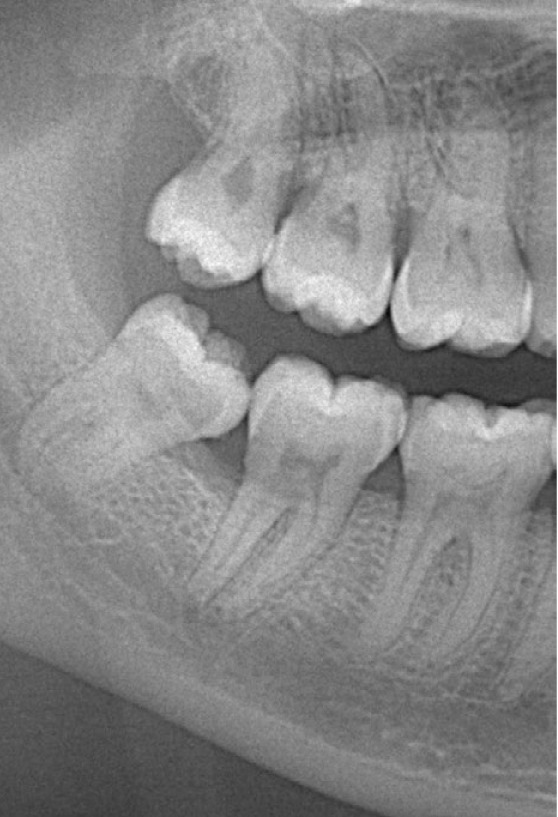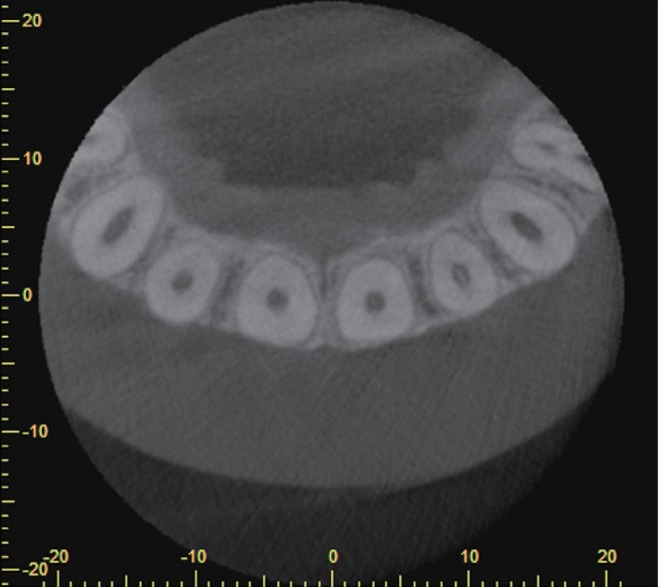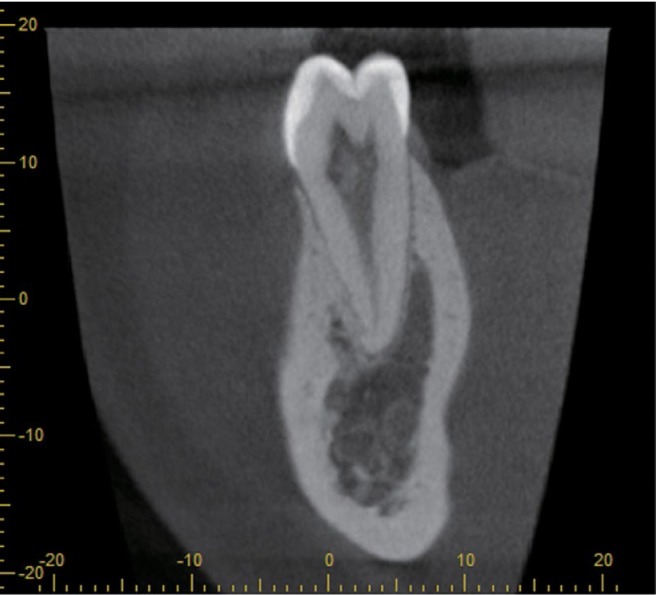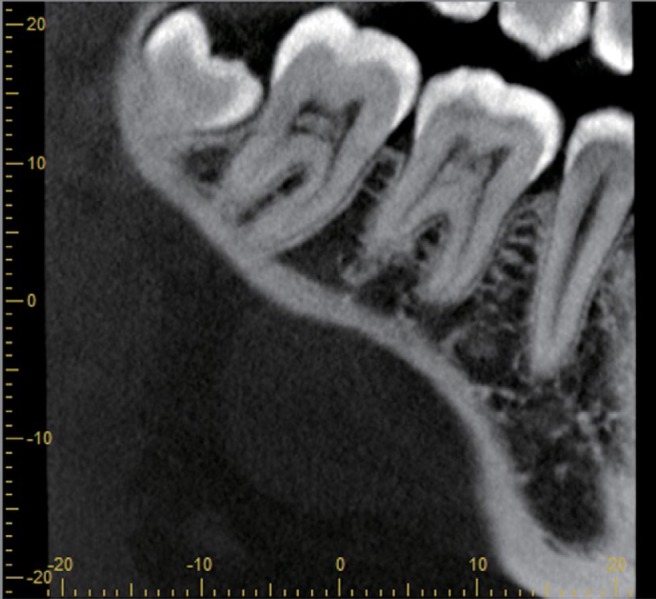Imaging Sci Dent.
2018 Sep;48(3):201-212. 10.5624/isd.2018.48.3.201.
A comparative study of cone-beam computed tomography and digital panoramic radiography for detecting pulp stones
- Affiliations
-
- 1Department of Oral and Maxillofacial Radiology, Necmettin Erbakan University, Faculty of Dentistry, Konya, Turkey. dishekmelek@gmail.com
- KMID: 2420548
- DOI: http://doi.org/10.5624/isd.2018.48.3.201
Abstract
- PURPOSE
The aim of this study was to compare cone-beam computed tomography (CBCT) and digital panoramic radiography (DPR) for the detection of pulp stones.
MATERIALS AND METHODS
DPR and CBCT images of 202 patients were randomly selected from the database of our department. All teeth were evaluated in sagittal, axial, and coronal sections in CBCT images. The systemic condition of patients, the presence of pulp stones, the location of the tooth, the group of teeth, and the presence and depth of caries and restorations were recorded. The presence of pulp stones in molar teeth was compared between DPR and CBCT images.
RESULTS
Pulp stones were identified in 105 (52.0%) of the 202 subjects and in 434 (7.7%) of the 5,656 teeth examined. The prevalence of pulp stones was similar between the sexes and across various tooth locations and groups of teeth (P>.05). A positive correlation was observed between age and the number of pulp stones (Ï=0.277, P < .01). Pulp stones were found significantly more often in restored or carious teeth (P < .001). CBCT and DPR showed a significant difference in the detection of pulp stones (P < .001), which were seen more often on DPR than on CBCT.
CONCLUSION
DPR, as a 2D imaging system, has inherent limitations leading to the misinterpretation of pulp stones. Restored and carious teeth should be carefully examined for the presence of pulp stones. CBCT imaging is recommended for a definitive assessment in cases where there is a suspicion of a pulp stone on DPR.
MeSH Terms
Figure
Cited by 2 articles
-
Evaluation of the relationship between sleep bruxism and pulpal calcifications in young women: A clinico-radiological study
Melek Tassoker
Imaging Sci Dent. 2018;48(4):277-281. doi: 10.5624/isd.2018.48.4.277.Evaluation of the relation between the pulp stones and direct restorations using cone beam computed tomography in a Turkish subpopulation
Güzide Pelin Sezgin, Sema Sönmez Kaplan, Tuna Kaplan
Restor Dent Endod. 2021;46(3):e34. doi: 10.5395/rde.2021.46.e34.
Reference
-
1. Baghdady VS, Ghose LJ, Nahoom HY. Prevalence of pulp stones in a teenage Iraqi group. J Endod. 1988; 14:309–311. PMID: 3251989.
Article2. da Silva EJNL, Prado MC, Queiroz PM, Nejaim Y, Brasil DM, Groppo FC, et al. Assessing pulp stones by cone-beam computed tomography. Clin Oral Investig. 2017; 21:2327–2333.
Article3. Sener S, Cobankara FK, Akgünlü F. Calcifications of the pulp chamber: prevalence and implicated factors. Clin Oral Investig. 2009; 13:209–215.4. Nayak M, Kumar J, Prasad LK. A radiographic correlation between systemic disorders and pulp stones. Indian J Dent Res. 2010; 21:369–373. PMID: 20930347.
Article5. Goga R, Chandler NP, Oginni AO. Pulp stones: a review. Int Endod J. 2008; 41:457–468. PMID: 18422587.
Article6. Moody AB, Browne RM, Robinson PP. A comparison of monopolar and bipolar electrical stimuli and thermal stimuli in determining the vitality of human teeth. Arch Oral Biol. 1989; 34:701–705. PMID: 2624561.
Article7. Horsley SH, Beckstrom B, Clark SJ, Scheetz JP, Khan Z, Farman AG. Prevalence of carotid and pulp calcifications: a correlation using digital panoramic radiographs. Int J Comput Assist Radiol Surg. 2009; 4:169–173. PMID: 20033616.
Article8. Movahhedian N, Haghnegahdar A, Owji F. How the prevalence of pulp stone in a population predicts the tisk for kidney stone. Iran Endod J. 2018; 13:246–250. PMID: 29707023.9. Ravanshad S, Khayat S, Freidonpour N. The prevalence of pulp stones in adult patients of Shiraz Dental School, a radiographic assessment. J Dent (Shiraz). 2015; 16:356–361. PMID: 26636125.10. Gulsahi A, Cebeci AI, Ozden S. A radiographic assessment of the prevalence of pulp stones in a group of Turkish dental patients. Int Endod J. 2009; 42:735–739. PMID: 19549152.
Article11. Ranjitkar S, Taylor JA, Townsend GC. A radiographic assessment of the prevalence of pulp stones in Australians. Aust Dent J. 2002; 47:36–40. PMID: 12035956.
Article12. Patil SR, Ghani HA, Almuhaiza M, Al-Zoubi IA, Anil KN, Misra N, et al. Prevalence of pulp stones in a Saudi Arabian subpopulation: a cone-beam computed tomography study. Saudi Endod J. 2018; 8:93–98.
Article13. Hsieh CY, Wu YC, Su CC, Chung MP, Huang RY, Ting PY, et al. The prevalence and distribution of radiopaque, calcified pulp stones: a cone-beam computed tomography study in a northern Taiwanese population. J Dent Sci. 2018; 13:138–144.14. Kannan S, Kannepady SK, Muthu K, Jeevan MB, Thapasum A. Radiographic assessment of the prevalence of pulp stones in Malaysians. J Endod. 2015; 41:333–337. PMID: 25476972.15. Turkal M, Tan E, Uzgur R, Hamidi MM, Colak H, Uzgur Z. Incidence and distribution of pulp stones found in radiographic dental examination of adult Turkish dental patients. Ann Med Health Sci Res. 2013; 3:572–576. PMID: 24380011.
Article16. al-Hadi Hamasha A, Darwazeh A. Prevalence of pulp stones in Jordanian adults. Oral Surg Oral Med Oral Pathol Oral Radiol Endod. 1998; 86:730–732. PMID: 9868733.17. Arys A, Philippart C, Dourov N. Microradiography and light microscopy of mineralization in the pulp of undemineralized human primary molars. J Oral Pathol Med. 1993; 22:49–53. PMID: 8445542.
Article18. Tamse A, Kaffe I, Littner MM, Shani R. Statistical evaluation of radiologic survey of pulp stones. J Endod. 1982; 8:455–458. PMID: 6958783.
Article19. Patel S, Durack C, Abella F, Shemesh H, Roig M, Lemberg K. Cone beam computed tomography in Endodontics - a review. Int Endod J. 2015; 48:3–15. PMID: 24697513.
Article20. Moss-Salentijn L, Hendricks-Klyvert M. Calcified structures in human dental pulps. J Endod. 1988; 14:184–189. PMID: 3077408.
Article21. Brullmann D, Schulze RK. Spatial resolution in CBCT machines for dental/maxillofacial applications - what do we know today? Dentomaxillofac Radiol. 2015; 44:20140204. PMID: 25168812.22. Shahbazian M, Vandewoude C, Wyatt J, Jacobs R. Comparative assessment of panoramic radiography and CBCT imaging for radiodiagnostics in the posterior maxilla. Clin Oral Investig. 2014; 18:293–300.
Article23. Kayal RA. Distortion of digital panoramic radiographs used for implant site assessment. J Orthod Sci. 2016; 5:117–120. PMID: 27843885.
Article24. Bevelander G, Johnson PL. Histogenesis and histochemistry of pulpal calcification. J Dent Res. 1956; 35:714–722. PMID: 13367289.
Article25. Yaacob HB, Hamid JA. Pulpal calcifications in primary teeth: a light microscope study. J Pedod. 1986; 10:254–264. PMID: 3459852.
- Full Text Links
- Actions
-
Cited
- CITED
-
- Close
- Share
- Similar articles
-
- Commentary on "Reliability of two different presurgical preparation methods for implant dentistry based on panoramic radiography and cone-beam computed tomography in cadavers"
- The value of panoramic radiography in assessing maxillary sinus inflammation
- Comparison of panoramic radiography and cone beam computed tomography for assessing the relationship between the maxillary sinus floor and maxillary molars
- Evaluation of the relation between the pulp stones and direct restorations using cone beam computed tomography in a Turkish subpopulation
- Assessment of the relationship between the mandibular third molar and the mandibular canal using panoramic radiograph and cone beam computed tomography





